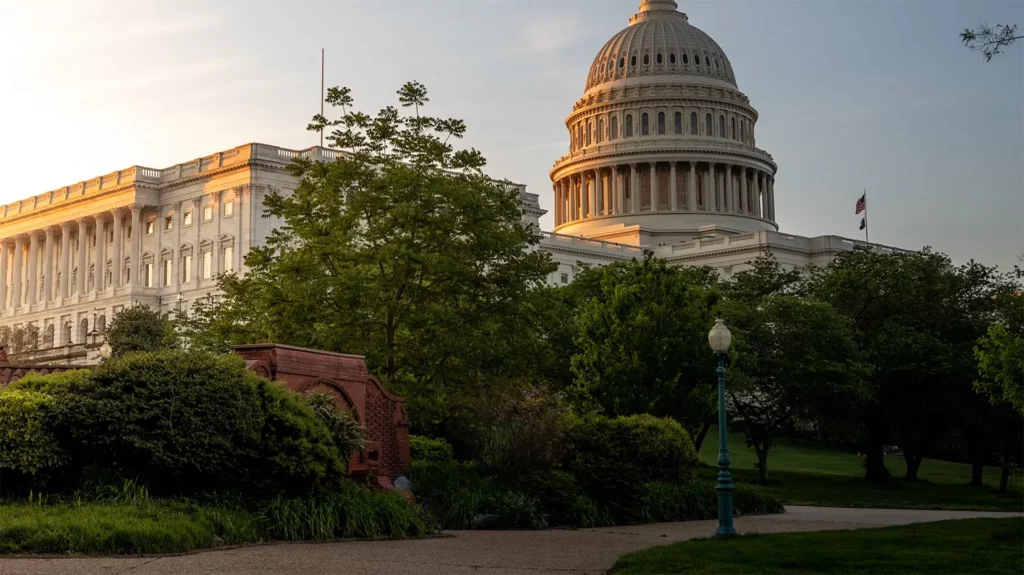Developments Of Competition Law In A Digital Economy
- June 21, 2023
Introduction: What Is Competition Law
Competition law is a division of law intended to prevent market distortion caused by anti-competitive business practices. Theories of competition law are rooted in basic economic principles and can be traced back as far as Ancient Rome’s Lex Julia de Annona, which prescribed criminal penalties for the manipulation of grocery prices. [1] Over time those concepts have continuously been tailored to fit more modern times, and, like many other economic concepts and regulations, America has been at the forefront of modern competition law regulation from as early as the 1800s. Specifically, with the enactment of the Sherman Antitrust Act in 1890, the United States began to enact legislation to prevent anti-competitive behaviors such as price fixing and monopolization.[2]

Recent Developments
More recently, the Biden Administration has brought competition law back to the forefront of American policy with the issuance of its July 2021 Executive Order on Promoting Competition in the American Economy (“EO 14036”), which was issued to bring “fair competition back to the economy[7]”. Specifically, the stated goal of EO 14036 is to “enforce the antitrust laws to combat the excessive concentration of industry, the abuses of market power, and the harmful effects of monopoly and monopsony.” [8]
In essence, EO 14036 issues a general policy of the Biden Administration to combat the recent consolidations of the technology and banking industries. [9] The Order seeks a “whole of government” approach calling for federal agencies to cooperate with each other where there is overlapping authority and creates the White House Competition Council within the Executive Office of the President. [10] As it applies to the payments industry, this has had a sweeping impact because it is largely a combination of both industries that the Biden Administration is seeking to place more regulations on.
One of the stated purposes of EO 14036 was to prevent further consolidation of the banking and technology industries. Debatably, America has fallen behind Europe on this front. Although the Sherman Act was one of the first major, modern competition law legislations in the world, the enforcement of the Sherman Act has not been stringent in those industries.[11] In fact, “[o]ver the past four decades, the United States has lost 70% of its banks” with nearly 10,000 bank closures and a majority of these closures have been from the result of mergers and acquisitions.[12]
Moreover, a bank merger application has not been formally denied in more than 15 years, and “[t]he Federal Reserve has now approved more than 3,500 consecutive merger applications since 2006.”[13] Because of this, JP Morgan, Bank of America, Wells Fargo, and Citibank—America’s four largest banks—hold about $9 trillion in assets, which is the same amount as nearly the next 300 banks combined.[14] The reason this is important is the effect on small community banks is chilling.[15] Additionally, the Department of Justice and the Federal Trade Commission issued a joint statement in support of EO 14036 explaining that the administrative agencies would “jointly launch a review of our merger guidelines with the goal of updating them to reflect a rigorous analytical approach consistent with applicable law.”[16]
How This Shift In Policies Will Affect Consumers
The shift in regulations also has a direct effect on how businesses may regulate their employees’ behaviors. As mentioned, the Biden Administration’s EO 14036 encouraged regulators to work together wherever there was overlap to encourage a more free market and that has also influenced the labor market. Around the same time as President Biden’s EO 14036 (2021), it was estimated approximately 18.1 percent of American workers—roughly 28 million individuals—were subject to non-compete agreements, including approximately 13.3 percent of workers earning less than $40.000 per year. [17]
Consequently, in January 2023, the Federal Trade Commission (FTC) proposed adding a new subchapter j, consisting of part 910, to chapter I in title 16 of the Code of Federal Regulations[18]. In doing so, the FTC released a fact sheet the Notice of Proposed Rule-making (NPRM), explaining:
To varying degrees, each state restricts employers’ ability to enforce noncompete clauses due to concerns that they harm workers and threaten a person’s ability to practice their trade…Employers often justify using noncompetes with their workers to protect confidential information and to get the most out of their investments in training and capital. But the record to date shows that in California, North Dakota and Oklahoma—three states in which employers can’t enforce noncompete clauses—industries that depend on trade secrets and other key investments have still flourished. This shows that employers have other ways of protecting these investments.[19]
This shift in policy changes also led to the National Labor Relations Board (NLRB) addressing noncompetes in a Memorandum on May 30, 2023, wherein General Counsel, Jennifer A. Abruzzo stated, “such agreements interfere with employee’s exercise of rights under Section 7 of the National Labor Relations Act (the Act or NLRA).” [20] Ms. Abrruzzo also explained, “[e]xcept in limited circumstances, I believe the proffer, maintenance, and enforcement of such agreements violate Section 8(a)(1) of the Act.”[21] While both of these federal agencies issuing opinions and proposed Rules indicate a potential wide-sweeping shift in anti-competitive business practices, it is worth noting who will and will not be affected by those potential changes.
As the FTC’s fact sheet points out in States like California these proposed Rules will not make much of a difference because noncompete agreements have largely been banned with limited exceptions since the 1800s.[22] However, the FTC’s proposed Rules will have a larger effect than the NLRB’s opinion.
Notably, the FTC’s proposed subchapter j will apply to “a person, as defined in 15 U.S.C. § 57b-1(a)(6), that hires or contracts with a worker to work for the person.”[23] 15 U.S.C. § 57b-1(a)(6) promulgates a broad definition for the term person, which “means any natural person, partnership, corporation, association, or other legal entity, including any person acting under color or authority of State law.”[24] In other words, if passed, the FTC’s proposed subchapter j will apply to almost all employers. However, there is a proposed exception set forth for a “person who is selling a business entity,”[25] and, if passed, I would expect some challenges to the scope of the FTC’s rule-making authority.
On the other hand, in the NLRA context, the general counsel’s opinion, if adopted by the Board would affect nearly all private-sector employers’ ability to enforce non-compete agreements with nonsupervisory employees.[26] Despite this, the general counsel’s opinion would not affect supervisors, independent contractors, or other workers who do not have rights under Section 7 of the NLRA.[27] Consequently, one could say the FTC’s proposed subchapter j would likely impact more employers and employees than the NLRB’s adoption of its general counsel’s opinion.
Conclusion/Takeaway
Most importantly, what this shift in policies means is employers must keep a keen eye out for potential changes. The digital payments and financial technology spaces will directly be affected by these policy shifts both as it applies to business-to-business relationships and as it applies to employer-employee relationships. It is clear the administration desires to prevent further consolidation of banking industries and digital payments is a highly competitive division of that industry that continues to evolve. Inevitably, this has led to many mergers. Therefore, EO 14036 will slow down that consolidation, and its derivative policy shift, which caused policy changes to employer-employee relations, will undoubtedly affect these growing companies who are seeking to protect their investments in their trade secrets.
Even if the FTC’s proposal is not adopted and the NLRB does not adopt its general counsel’s opinion, it is clear that there is a shift trending toward regulation of the employment relationship at the federal level. Given EO 14036, this shift should come as no surprise. Yet, it is in employers’ best interest to prepare for the potential changes to occur and look to Legislation in States where such anticompetitive practices are already unenforceable for workarounds to still protect their investments in their trade secrets and other business practices without the need for such non-compete agreements.
[1] Lex Julia de Annona (Ancient Roman law prescribing criminal penalties for manipulation of grocery prices)
[2] 26 Stat. 209, reprinted as amended in 15 U.S.C. §1 et seq. (“Sherman Act”).
[3] President Biden, United States, Remarks by President Biden at Signing of An Executive Order Promoting Competition in the American Economy, State Dining Room (July 9, 2021)
[4] Exec. Order No. 14036, §1, 86 FR 36987 (July 9, 2021)
[5] The White House, supra, n. 1.
[6] Exec. Order No. 14036, supra, n. 3, § 4, at 36990.
[7] The White House, supra n. 1.
[8] Id.
[9] Id.; see also Jeremy Kress, Biden Wants to Crack Down on Bank Mergers—Her’s Why that Could Help Consumers and the Economy, Michigan Ross (Aug. 4, 2021)
[10] Id.
[11] Bowman, Governor, My Perspective on Bank Regulation and Supervision at the Conference for Community Bankers sponsored by the American Bankers Association (Feb. 16, 2021).
[12] Fed. Trade Comm’n (F.T.C.), Statement of FTC Chair Lina M. Khan and Antitrust Division Acting Assistant Attorney General Richard A. Powers on Competition Executive Order’s Call to Consider Revisions to Merger Guidelines, https://www.ftc.gov/news-events/news/press-releases/2021/07/statement-ftc-chair-lina-m-khan-antitrust-division-acting-assistant-attorney-general-richard-powers.
[13] See Evan P. Starr et al., Noncompete Agreements in the U.S. Labor Force, 64 J. Law & Econ. 53, 60, 64 (2021); see also U.S. Gov’t Accountability Off., GAO-23-103785, Noncompete Agreements: Use Is Widespread to Protect Business’ Stated Interests, Restricts Job Mobility, and May Affect Wages (2023).
[14] F.T.C., Notice of Proposed Rulemaking, Matter No. P201200, Non-Compete Clause Rulemaking (Jan. 5, 2023).
[15] F.T.C., FACT SHEET: FTC Proposes Rule to Ban Noncompete Clauses, Which Hurt Workers and Harm Competition: https://www.ftc.gov/system/files/ftc_gov/pdf/noncompete_nprm_fact_sheet.pdf.
[16] NLRB Gen. Counsel, GC 23-08, 1, Non-Compete Agreements that Violate the National Labor Relations Act (May 30, 2023).
[17] Id.
[18] See Bosley Med. Grp. v. Abramson, 161 Cal.App.3d 288 (Cal. Ct. App. 1984).
[19] F.T.C, supra, § 910.1(c).
[20] 15 U.S.C. § 57b-1(a)(6).
[21] F.T.C, supra, § 910.3.
Recommended Posts
-

Step-by-Step Guide to Getting Off the TMF MATCH List
The TMF MATCH list, maintained by the TMF (Terminate Merchant File)...
Read More -

The Guide to a Successful Merger and Acquisition
Introduction Mergers and acquisitions (M&A) are pivotal strategies for companies looking to...
Read More -

Understanding Fiduciary Duties of Corporate Officers and Directors
Understanding Fiduciary Duties of Corporate Officers and Directors In the realm of...
Read More